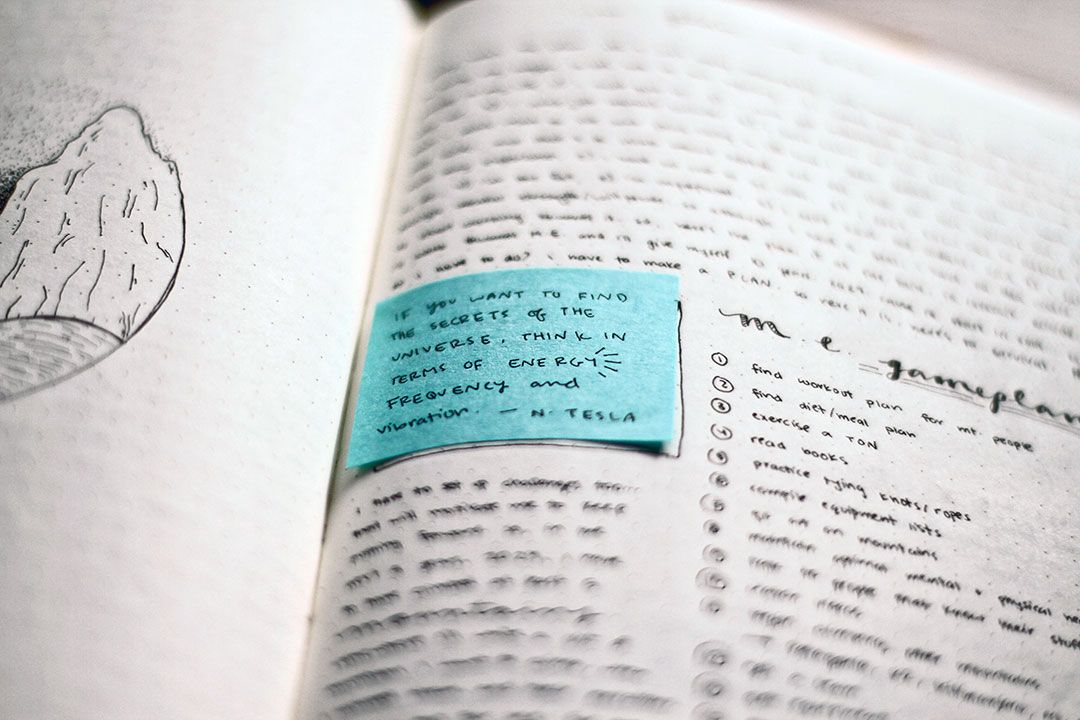Journaling can be an incredibly valuable tool in your ayahuasca integration process, and indeed in working with all psychedelics. The process of writing—not for an audience, strictly for yourself—clarifies thoughts and feelings, helping you recognize patterns that run through your life. In the course of this self-reflection, you may discover you know more than you realized. Journaling has a way of unlocking deeper thoughts and understandings from your inner self.
Writing things out can feel grounding, soothing, even healing. And, journaling creates a record for the future that serves as both a memory bank and a source of inspiration. Of the many integrative practices I suggest, journaling ranks in the top five.
Setting Up a Journaling Practice
So how do you get started?
Writing by hand is the long-favored method: it’s tactile, soothing, and completely portable. Many people find longhand opens up a deeper level of process than typing. All you need is pen/pencil and paper/notebook—take the time to choose ones that bring the most pleasure.
Although it’s a different frequency than handwriting, typing into a computer can work well for those whose minds move fast and fingers move faster. Some find the fluidity and speed of this process satisfying; others speculate that the two-handedness stimulates the two hemispheres of the brain. As an added benefit, the result is always legible.
Journals can be auditory as well. Narrating your experiences and thoughts into your phone is an easy way to record them. In fact, this is what I do when I’m on theplant medicine retreat known as dieta, when the realizations come in thick and fast and I’m not in a state of mind to use my laptop. You can listen to the entries again later or transcribe them into written format if you like.
Make Journaling a Routine, and Date All Entries
Regardless of your method, it’s helpful to date every entry. Don’t worry about spelling, grammar, or punctuation; what’s most important is to tune into the inner essence of your experience. And don’t get sidetracked by editing while writing—just let it flow. Read it afterwards, or if you’re in a long session, every 15-20 minutes or so if you feel the urge and keep on going. It’s the process, not the product, that’s most important here.
You can build journaling into your daily routine. Julia Cameron’s famous “Morning Pages” method outlined in The Artist’s Way aims to capture the stream of consciousness with three pages daily. Or, you can set a timer for 20 minutes and write throughout the whole period. If nothing comes at the beginning, start off with “I don’t know what to write,” or even “La, la la la la…” I’m always amused to see it’s the people who say at the beginning of class, “I don’t know what to write!” who are the ones still scribbling away past the end.
Journaling for Psychedelic Integration
There is open-ended journaling, and then there is journaling for a specific purpose. With the latter, you focus on the content of your ayahuasca sessions and your ongoing integration process. Journaling is one way to assimilate the enormous amount of information revealed by psychedelics and start to make sense of it in the context of your own life.
Here are some specific suggestions for using journaling as an integration tool.
Keeping a Trip Log
As soon as possible (ideally, the morning after), write up detailed notes of your ceremony or retreat. Write everything you recall—your intentions, the contents of your journey, your physical and emotional state before, during and after, and any thought-provoking conversations, dreams or insights that may have occurred outside of session. Although it may be difficult to remember everything (ayahuasca experiences can be astonishingly multi-faceted), you’re guaranteed to forget more as time goes on.
One reason to keep this kind of log is simply the process of doing it, and the way the act of writing can release further insights. A second motive is to create a reference for the future. Months down the line, memories will have faded, but rereading your journal can evoke the experience again with startling clarity, reconnecting you with the intentions and learnings of your exploration.
Questions for Reflection
What follows are a dozen potential journal prompts—questions that can be helpful in inspiring and organizing your thoughts. You don’t have to do them all. Pick the ones that pique your interest. Some of these you may return to repeatedly, answering again as your understanding evolves.
- Write down the key messages and major learnings you receive— realizations, understandings, wisdom. Describe your situation before and after. Track your growth curve.
- How does
the world look different now, following your retreat?
- Nature?
- Modern society?
- Other people?
- Important people in your life?
- Did you experience struggles or conflicts in ceremony? Were there times you fought the medicine? What triggered this? Write about what happened.
- Moments of extreme love? Extreme fear? Explore the range of emotions you experienced, and how each of these felt in your body.
- What did you realize about your current life? Your relationships? What about your job? Your family? Your body/health/diet? Things to do differently, habits to change? What kind of commitments do you want to make to yourself?
More Journaling Questions
- Write a letter to a close friend, describing yourself a year from now. Best-case scenario, if you get the support you need and do the work you want to do, what does your life look like? What do you look like; what kind of person are you in it? Write it out, and tune into this intention regularly, holding this vision of your future self.
- How have things changed since your retreat? What have you understood/accepted? What are you still struggling to understand/accept?
- What would help you in this process? Which resources, inner and outer, are needed in this situation?
- What are you grateful for? (A gratitude journal, or an ongoing gratitude page you add to daily, is its own beautiful writing practice.)
- Recall your intention. How was it addressed, perhaps in forms that were unexpected or not obvious? How are you still working with understanding this? If your experiences in ceremony feel disconnected or unrelated to your intention, imagine for a moment that somehow a secret, coded message was delivered within them. Explain how this is so.
- Look at the sequence of your ceremonies as a story. See the themes; reflect and expand on the whole journey. What’s the narrative arc? Is the main character a hero or a victim, a fool or a sage? What is s/he is moving towards? What is the core struggle here? Does s/he need something?
- What are your biggest challenges in your integration process? The toughest areas? The easiest? What positive qualities and resources do you bring to the work?
A Few Last Thoughts
You can write inspiring quotes, lyrics, prayers, and mantras in your journal, paste in images and pictures, or draw and sketch. Dreams can make their way into your integration journal as well.
Sometimes we come to an impasse in our process. If your journaling reveals you’re stuck, have a session or a conversation with someone to help you break free.
You don’t need to read what you write every time (it’s often best just to write and leave it), but it can be helpful to review your journal every few weeks or months, to assimilate information, recognize larger patterns, and generally keep on track.
Above all, working with journaling as an integrative practice is a powerful way to expand and deepen your perspective. By writing your way through your process, you extract the juice, the vital essence, from your ayahuasca experiences, distilling the meaning that’s there for you. In doing so, you’re fine-tuning the work you did in ceremony, moving into deeper relationship with the plant, and yourself.






